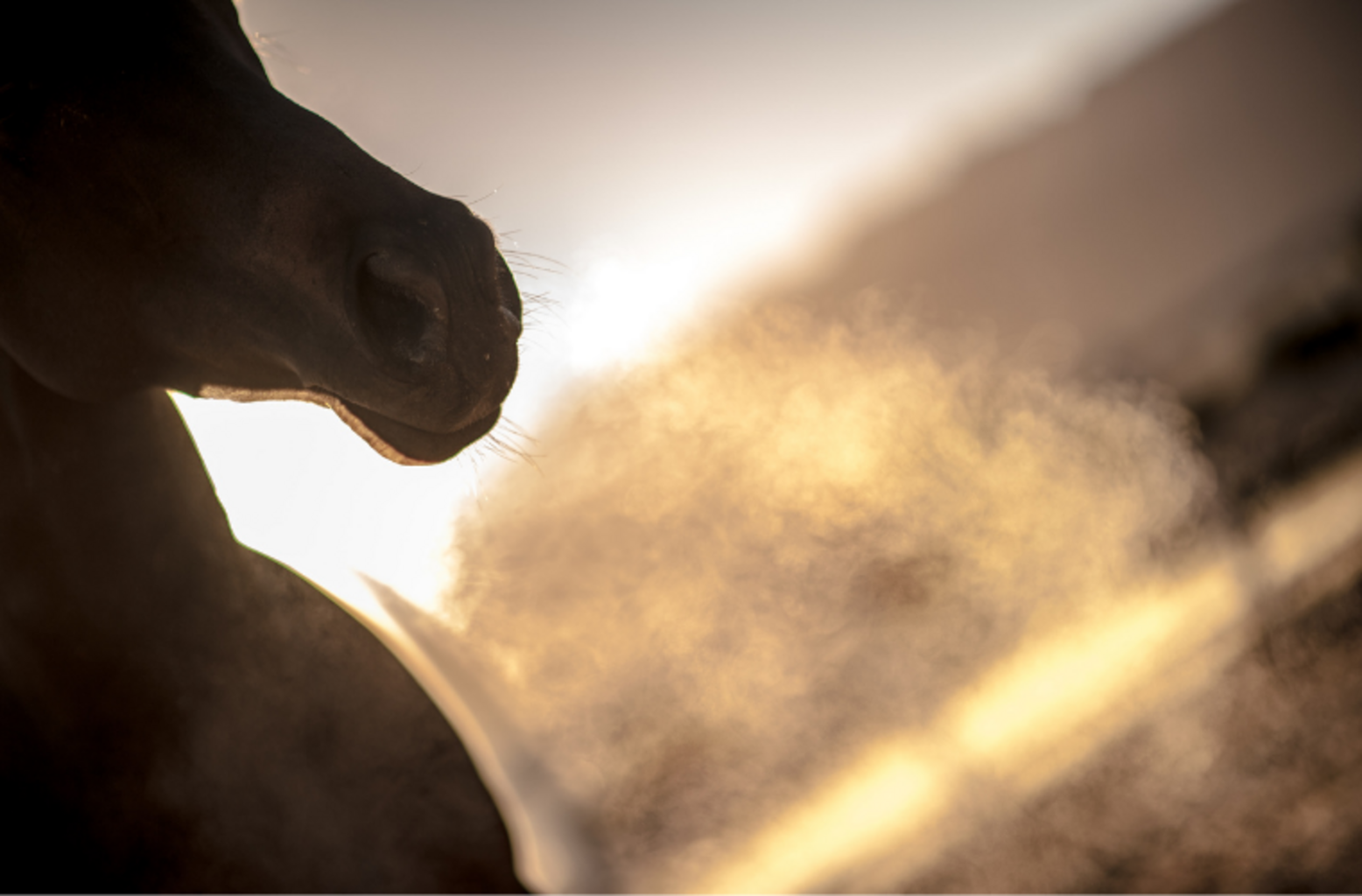Respiratory diseases in horses
By Amelie Kokorsky
In this article we will deal with the topic of "coughing" and the disease COPD/ broken wind that is often associated with it.
Before we delve deeper into the topic of "coughing", some terms should be explained in more detail, because in the meantime many different terms cure around the topic of "coughing". Some describe exactly the same thing and can be used as synonyms. Others, on the other hand, should be clearly distinguished from each other.
Explanation of terms:
| Term | Definition |
| COPD |
Short for chronic obstructive pulmonary disease. The term was adopted from human medicine. In the actual sense, it is a collective term for lung diseases in which breathing is difficult. In horses, the diseases can now be better classified, so that the term COPD is/ should be used less and less. |
|
Equine asthma |
Collective term covering the spectrum between IAD and RAO. |
|
RAO |
Short for recurrent airway obstruction. There is a clear reduction in performance. The cough is also present at rest. It is a chronic but non-infectious respiratory disease. There is no cure, but the symptoms can be alleviated. |
| IAD |
Short for inflammatory airway disease. The reduction in performance is not as severe because there are no severe respiratory problems. Occasionally the horse coughs even when resting. A cure is possible in this case, although it is also a chronic respiratory disease - without an infectious cause. IAD is therefore virtually the precursor of RAO. |
|
Broken wind |
Chronic, irreversible (not curable) respiratory disease. Usually there is already damage to the lungs (and heart). Describes the course of RAO with its manifested late effects. |
In this article, we will therefore no longer speak of COPD, but will increasingly use the terms RAO or IAD.
What exactly is RAO/ IAD and what is the difference?
Both terms cover chronic respiratory disease in horses. Chronic means that the disease has been present for more than 6 weeks and there is no relief in sight. The symptoms show up on a daily basis. The intensity usually depends on different situations. For example, the symptoms may increase when the horse is in motion and decrease when it is at rest - or the other way round, so that the symptoms only appear after the horse has been in motion and has come to rest.
The difference between the two diseases lies primarily in the intensity of the clinical picture. IAD is a chronic respiratory disease in its early stages. Curing the symptoms is much easier and quicker. RAO is also a chronic respiratory disease, but the intensity of the disease is much more pronounced. A cure is only possible to a limited extent. One can try to alleviate the symptoms as much as possible in order to relieve the horse. However, RAO is not completely curable in most cases!
How do the diseases develop?
The development and thus the causes of IAD and RAO are very similar. In the case of RAO, the disease was only recognized or treated too late, so that the disease is already more advanced.
The main cause for the development of a chronic respiratory disease is: Poor horse mangament!
Especially in winter, the humidity in some stables is very high. Fearing that the animals might freeze or that the water pipes might ice up, people close windows and doors. This reduces the air circulation and results in high humidity in the barn. In smaller barns, you can see precipitation forming on the windows and walls. One should also not underestimate the release of water via the horses' breath. Horses release a lot of heat and a lot of water into the environment through their breath. Due to the precipitation and the high humidity, mould spores can form and multiply excellently in the wet and cold environment. These moulds can trigger allergies in many horses.
In addition, the horses stand in the stalls and hardly move. Breathing is very shallow, so the lungs are not well "ventilated". Mould spores and dust can therefore settle much better in the lungs.
Lack of exercise in general is a factor in the development of respiratory diseases. Horses (lungs) are designed for the animal to move continuously. Only in sufficient movement does the horse breathe in and out deeply and thus ventilate the entire lung. If the horse is kept in a box for several hours and during the day in winter only gets a small, perhaps muddy, paddock, the horse will not move enough for optimal ventilation of the lungs. Dust, mould spores and germs can settle in the lungs and lead to respiratory diseases. A box with a window is not enough to increase respiratory activity. Often, however, the symptoms of a respiratory disease are alleviated if the horse is kept in an open stable and is also regularly exercised.
Of course, the feed also plays a particularly important role. If you feed your horse hay of poor quality, which is very dusty or even mouldy, this can irritate the respiratory tract enormously. In the long run, this can also lead to respiratory diseases. On the one hand, poor quality feed is of course not good for the entire digestive tract, but on the other hand, one must also take into account the time horses spend eating. Horses spend up to 16 hours a day looking for food. This means they pluck at hay nets, dig in the straw with their nose or get their whole nostrils stuck in the haystack. During this time, the horses ingest dust particles and, in worse cases, even mould spores. These germs can be a great burden on the respiratory tract.
The bedding should also be looked at. It is not uncommon for horses to be bedded with musty, sometimes even mouldy straw. As already mentioned, horses also like to dig in their bedding for a few tasty stalks of straw. This is no problem if the straw is of good quality. However, if the straw is mouldy or very dusty, the bedding also pollutes the horses' respiratory tract. In addition, the horses lie on the straw and breathe in the mould spores and/ or dust of the bedding while they rest their heads and/ or nostrils in the straw.
As a final point, the connection between the intestine and the lungs is also interesting. If the intestines do not work properly because of possible diseases such as cryptopyrroluria (CPU), important nutrients from the feed cannot be absorbed optimally. Cryptopyrroluria is a metabolic disorder of the horse due to feeding and management errors. It is a very complex disease that can lead to many problems in the horse's metabolism. Feeding and management errors can cause problems in the gastrointestinal tract in CPU. The intestines can become inflamed, which can lead to a lack of sulphur. The lack of sulphur and therefore also a lack of cysteine can lead to problems with the respiratory system such as COPD. The lungs are therefore dependent on a well-functioning intestine.
A nutrient deficiency can occur despite good feeding and the best feed quality. The intestine extracts many important nutrients from the food pulp with which the horse's organism can build other building materials for other organs. If the intestine does not work properly, cysteine, for example, cannot be produced or is produced inadequately. The lungs, on the other hand, need the cysteine to be able to form the mucus in the lungs. This mucus is very important, because without it the lungs would dry out. Similar to a mouth without saliva. So without cysteine, the lungs become drier and thus much more susceptible to pathogens. In addition, the horse becomes more sensitive to dust. A so-called "hay allergy" can develop.
Attention: Don't forget that the problem lies in the intestine!
How can I tell if my horse has IAD/RAO?
First of all: Not every horse that coughs for 3-4 days is suffering from a respiratory disease! IAD/ RAO are chronic diseases with, as mentioned above, symptoms that last longer than 6 weeks without interruption. A horse can also have a cold and cough for a few days. But that is another topic.
Symptoms can vary greatly in intensity. Some symptoms can be seen from a distance without seeing the horse. Others are difficult to interpret even when looking closely. The leading symptoms of IAD/ RAO are coughing and reduced performance. This brings us to the first problem. Coughing itself is still very easy to recognize. Some horses only cough in certain situations, for example when they are physically exerting themselves or when they come into contact with dust. Other horses already cough chronically and thus also in calm phases. The reduction in performance is already more difficult to interpret. In some horses, the reduction in performance is immediately noticeable. They find it difficult to gallop or to do other physically demanding work. They are very limited in their performance and also in their willingness to perform. Other horses can perform almost normally and the symptoms are still quite mild. They sweat more during physical work and/ or their nostrils are more distended than usual. The breaks between and during training have to be longer so that new strength and literally new "air" is available again. After training, the horses also need longer to recover from the work. Their nostrils are still open after several minutes of pacing and the pulse is/ remains elevated. If you watch the horse's belly very closely, you can see that they have to really pull their belly in when they exhale in order to push the air out of their lungs. In worse cases of RAO, this results in what is called "forced breathing". The horses find it harder to exhale and inhale. The whole breathing process looks like effort and it is! The horses push the air out of their lungs with the help of their abdominal muscles. If this condition persists over a longer period of time and sometimes even during resting phases, the horse develops the "steam groove". The oblique abdominal muscles are then clearly visible and it always seems as if the horse wants to pull in its belly. If such symptoms develop, one can already speak of broken wind.
Attention: The horse is really not well in this condition! If you see compressive breathing and/ or steam groove in a horse, you should stop the physical work immediately and walk the horse slowly. In this case, a veterinarian should also be called for help, because there is a risk of circulatory collapse!
Nasal discharge is not always recognizable. Many owners always look for nasal discharge in respiratory disease. However, as IAD/ RAO is not a bacterial or viral infection, nasal discharge does not always have to be visible. Most of the time, the horses swallow the nasal discharge so that it does not visibly run out of the nose. If yellow-green nasal discharge is still visible, it should be clarified by a veterinarian, because it is not always primarily unrelated to chronic respiratory diseases. Other diseases may also have developed into IAD/ RAO.

Symptoms of IAD/RAO at a glance:
- Coughing
- Reduced performance
- Increased sweating during physical work
- Flared nostrils during physical work
- Longer cool-down phase after/ between work phases with only slowly decreasing pulse rate
- The horse becomes weaker, limp and unmotivated towards physical work
- Abdominal compression breathing and/ or steam groove on the belly (emergency -> veterinarian!)
- Circulatory weakness and/ or pale mucous membranes (emergency -> veterinarian!)
How can I help my horse if it has IAD/RAO?
No matter which form of therapy you want to use, it can only be successful if the triggering factors are minimized as best as possible.
This includes the best possible and constant ventilation in the stable in order to keep the humidity and the associated mould spore load low. Draught should not be allowed to develop. In addition, the horses should be kept in the fresh air as long as possible, even in winter. In best case, they should be kept in large, mud-free paddocks with plenty of opportunities for free exercise. But daily exercise with the owner and/ or groom should not be neglected in winter (and also in summer). The horse is dependent on regular exercise. This movement is to a large extent covered by the work with humans. Regular riding, lunging or work from the ground ensure deep breathing and thus vital, deep ventilation of the lungs.
Other helpful points for the treatment of chronic respiratory diseases that we will not go into in this report are the alternative, additional treatments with magnetic field therapy, acupuncture, manual therapy, Schuessler salts, homeopathy, inhalation and hay steaming.
The big point of feeding:
As mentioned above, hay should be of good quality, i.e. low in dust and not contaminated by mould. The same applies to any kind of bedding. However, one can support horses suffering from IAD/ RAO in many ways with the feed and alleviate the symptoms as best as possible IF the triggering factors are minimized, but in the best case eliminated at all. Many herbs can support the horses' respiratory system. However, a distinction should be made between mucolytic herbs and mucus promoting herbs.
Mucolytic herbs should be given when horses have a mucous cough and/ or nasal discharge is seen. The mucus can also be deposited in the lungs or trachea and is not visible at first. Suitable mucolytic herbs are:
- Stiefel Sage (30-50 g per day) = can have an mucolytic and disinfectant effect.
- Stiefel Thyme (25-50 g a day) = can relieve irritant coughs
- Stiefel Ribwort (15-25 g a day) = can help to cough up mucus better
- Stiefel Camomile (25-50 g a day) = has a calming effect and is said to have an anti-inflammatory effect
- Stiefel Fennel (30-50 g a day) = can loosen stuck mucus
Tip: I mix all the above herbs together at home in a thermos as directed. Then I pour hot, almost boiling water over them and let everything steep for at least 10 minutes. Then I pour the tea AND the herbs over the feed and let it cool down a bit. My horses love it. ☺
If you don't want to feed individual herbs, you can also use herbal mixtures. Stiefel Cough Herbs are suitable here. The herbal mixture contains the most important herbs to have a positive effect on the respiratory tract in the case of postural and feeding-related respiratory complaints. The herbs contained can loosen existing mucus and have a calming effect on the respiratory tract when coughing. The herbs are natural and can be fed over a longer period of time without any problems.
Stiefel Broncho Plus is a liquid bronchial elixir, which in most cases is eaten with pleasure by the horses. The extra portion of star anise and quendel, which is also called field thyme, supports the regeneration of the respiratory tract even more intensively. The natural cleaning of the lungs can be effectively stimulated and harmful particles as well as bacteria and dust can be eliminated.
If the cough is a dry, irritant cough, it is better to use mucus promoting herbs. Mucus promoting herbs can support the respiratory tract and promote the production of mucus. An absolute "must" for a dry cough is the administration of Liquorice Root. Ideally, Liquorice Root should be fed as a tea. To do this, put the respective amount (10-60 g per day; depending on the horse) in a thermos flask or other container and add at least 200 ml of almost boiling water. Let the mixture of Liquorice Root and water steep for at least 10 minutes and then let it cool down a bit. If the horses don't like the tea, you can mix it with the other feed or soften it with a little mash. It is important that the Liquorice Root itself is also fed!
In addition to the tea, the Stiefel Cough Herbs can also be useful for dry coughs. The herbs contained, such as aniseed and caraway, can have an additional calming and antibacterial effect.
In dry coughs it is important that the horse is supplied with sufficient sulphur to be able to produce cysteine. Cysteine is needed for the physiological formation of mucus in the lungs. If the sulphur supply is insufficient, the administration of Stiefel MSM (methylsulfonylmethane) can compensate for the lack of sulphur and relieve the dry cough. A dose of 15 g per day for a 500 kg horse is sufficient to promote mucus production in the lungs.
In the case of a dry cough and a possible sulphur deficiency, one should always remember the close connection between the lungs and the intestines. As described above, a poorly functioning intestine can also be a trigger for coughing. “Intestinal care" can therefore also play a role in coughing and IAD/ RAO. In order to support the intestines in their daily work, the administration of Liquorice Root tea can have a very positive effect, but also the feeding of other herbs can have a positive influence on the intestinal activity. The tannins in the Stiefel Intestinal Herbs can be used as a supplement to help the intestinal tract absorb important nutrients. In many cases, a general intestinal rehabilitation can help the horse and its intestine.
Black cumin is said to have an anti-inflammatory and calming effect. This means that Stiefel Black Cumin can help to relieve the symptoms of both dry coughs and coughs with viscous mucus. Horses prone to allergic coughs in particular can benefit from supplementary feeding of black cumin. Regular feeding can reduce the tendency of the bronchial tubes to spasm, as the black cumin can have an antispasmodic effect.
Conclusion
COPD is an outdated, general term for respiratory diseases. We now know more and can better and more individually describe and differentiate between equine respiratory diseases. RAO/ IAD are both chronic respiratory diseases with varying degrees of severity, although RAO is no longer completely curable. The symptoms of both diseases are gradual and often start harmlessly, so that close observation of a horse (during physical work) is definitely useful. The symptoms of IAD/ RAO can be alleviated in many cases if the triggering factors, such as high humidity in the stable and/ or poor hay quality, are eliminated, so that the horses can be helped despite the disease! This disease also requires quick and effective action in order to be able to stop the gradual process of chronic respiratory disease in the best possible way. No one wants to have a weak horse that finds it difficult to breathe, because this unattractive sight also leaves us owners and grooms breathless. There are many ways to take a deep breath and now you know some of them. So take a deep breath and get going. ☺
Latest reviews
-
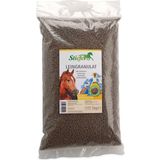 5.0 (7)
5.0 (7)Stiefel Linseed Granules, 5 kg
- Ready-to-feed linseed cake
- High mucilage content
- Reduced fat content due to cold pressing
£17.80 (£3.56 / kg)Delivery by January 07
-
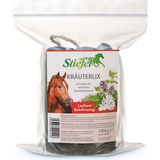 4.8 (10)
4.8 (10)Stiefel Kräuterlix Horse Lick, 1 kg
- Lick stone with bronchial herbs
- A tasty reward
- With attached cord to tie it up
£13.33 (£13.33 / kg)Delivery by January 07
-
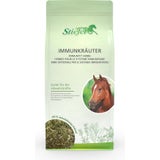 5.0 (7)
5.0 (7)Stiefel Immunity Herbs , 1 kg
New!- 100% natural herbal mixture
- Immunity herbs
- Good for the body's defences
£22.27 (£22.27 / kg)Delivery by January 07
-
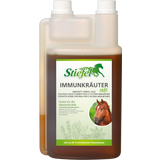 4.8 (6)
4.8 (6)Stiefel Immunity Herbal Liquid, 1 l
Bestseller- To support the immune system
- Made of 100% natural herbs
- No added sugar
£15.12 (£15.12 / l)Delivery by January 07
-
Great Britain: Free standard delivery from £79.90
-
Free
returns Secure payments
with SSL encryption technology

